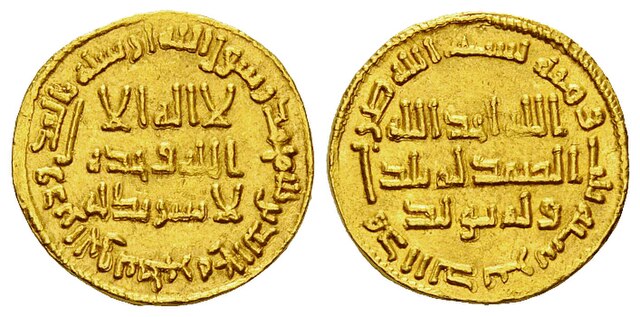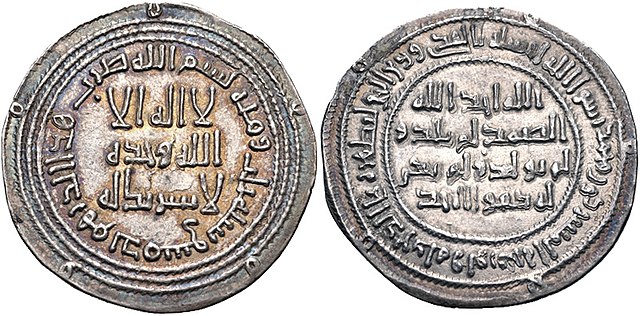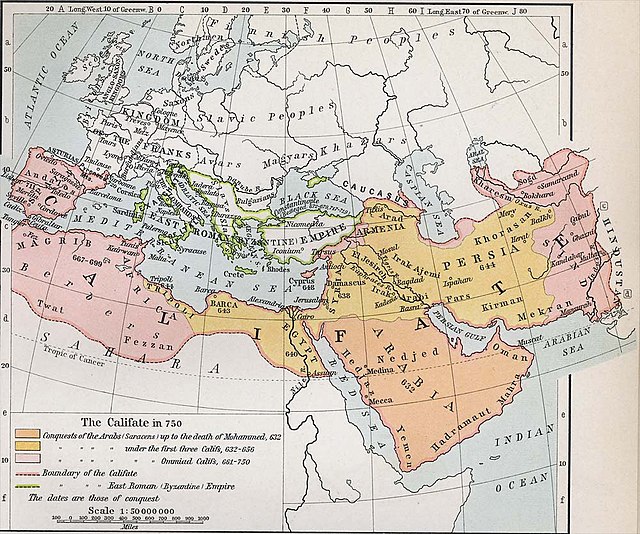Yazid ibn Abd al-Malik ibn Marwan, commonly known as Yazid II, was the ninth Umayyad caliph, ruling from 720 until his death in 724. Although he lacked administrative or military experience, he derived prestige from his lineage, being a descendant of both ruling branches of the Umayyad dynasty, the Sufyanids who founded the Umayyad Caliphate in 661 and the Marwanids who succeeded them in 684. He was designated by his half-brother, Caliph Sulayman ibn Abd al-Malik, as second-in-line to the succession after their cousin Umar, as a compromise with the sons of Abd al-Malik.
Gold dinar of Yazid II
A building in the palatial complex of al-Qastal (pictured in 2018) built by Yazid
Silver dirham of Yazid II, minted in 721/22
Ruins of Beit Ras (Capitolias)
The Umayyad Caliphate or Umayyad Empire was the second caliphate established after the death of the Islamic prophet Muhammad and was ruled by the Umayyad dynasty. Uthman ibn Affan, the third of the Rashidun caliphs, was also a member of the clan. The family established dynastic, hereditary rule with Mu'awiya I, the long-time governor of Greater Syria, who became caliph after the end of the First Fitna in 661. After Mu'awiya's death in 680, conflicts over the succession resulted in the Second Fitna, and power eventually fell to Marwan I, from another branch of the clan. Syria remained the Umayyads' main power base thereafter, with Damascus as their capital.

Arab-Sasanian-style Umayyad coin minted under Mu'awiya I rule in Basra in 675/76 in the name of the Umayyad governor Ubayd Allah ibn Ziyad. The latter's governorship later spanned all of the eastern caliphate. His father Ziyad ibn Abihi was adopted as a half-brother by Mu'awiya I, who made him his practical viceroy over the eastern caliphate.
Abd al-Malik introduced an independent Islamic currency, the gold dinar, in 693, which originally depicted a human figure, likely the caliph, as shown in this coin minted in 695. In 697, the figural depictions were replaced solely by Qur'anic and other Islamic inscriptions
The expansion of the Muslim Caliphate until 750, from William R. Shepherd's Historical Atlas. Muslim state at the death of Muhammad Expansion under the Rashidun Caliphate Expansion under the Umayyad Caliphate Byzantine Empire
A 14th-century illustration of the siege of Constantinople








